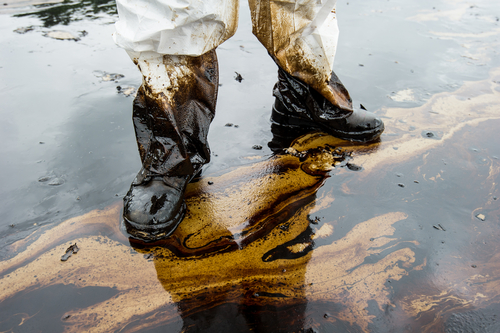 |
Q: Does the Environmental Protection Agency (EPA) define specific environmentally equivalent alternative measures and/or technologies that are allowed or disallowed under the SPCC rule?
A: No. The EPA does not provide a list of measures or technologies that meet the definition of environmental equivalence. Instead, the EPA intends that owners/operators have the flexibility to work with a registered professional engineer (PE) to address the needs of each site and situation, and that “achieve environmental protection in a manner that fits the facility’s unique circumstances,” while providing an equal level of protection of navigable waters and adjoining shorelines. The EPA notes, however, that environmental equivalence also allows for the use of more protective industry practices as well as for adopting new technologies as they become available.
Q: Are there any situations or circumstances that would allow the implementation of environmentally equivalent measures without the certification of a PE?
A: No. While the SPCC rule does allow facilities that meet the criteria in 112.3(g) to self-certify their SPCC plans (in lieu of PE certification), this does not include environmentally equivalent measures. Facility owners/operators that wish to employ such measures must secure the services of a qualified PE to verify that any alternative measures are in accordance with good engineering practice and applicable industry standards.
Simplify SPCC compliance with the NEW TRAC360 platform. In just a few minutes, see how easy it is to create compliant plans and checklists, train your team, and find answers to all your SPCC questions. Learn More.
Q: Is the facility owner/operator required to provide a rationale for the alternative measure or is the PE verification enough to satisfy the requirements?
A: Although a PE must verify any environmentally equivalent measures, the owner/operator is ultimately responsible for the SPCC Plan. The Plan must include the reason or rationale for deviating from a SPCC rule requirement(s), as well as a detailed description of the alternate measure and how that measure will provide the environmentally equivalent protection. The EPA notes that owners/operators may explain that a SPCC requirement is not appropriate for their facilities based on good engineering practices or other reasons, but that another measure would provide equal or better environmental protection. For example, the EPA cites a situation where a requirement that is essential for a gasoline storage facility may be less suitable for a hot asphalt cement storage facility, and that the latter would benefit more from an alternate measure or technology that is environmentally equivalent. Among the many reasons accepted by the EPA for considering alternative measures are safety, cost, geographical constraints, or appropriateness based on site-specific circumstances.
The Ultimate SPCC Compliance Tool
TRAC360 for SPCC is a powerful application that simplifies compliance with EPA’s Spill Prevention, Control, and Countermeasure rule. Whether you need help creating your facility-specific SPCC plan, writing inspection checklists for your tanks, or training your oil-handling workforce, TRAC360 is there to help. Learn More.
Q: Are there any parts of the SPCC rule that do not allow for adoption of alternative measures?
A: Yes. The EPA specifically excludes the following from environmental equivalence deviations:
- Secondary containment requirements in 112.7(c) and 112.7(h)(1), and in relevant portions of 112.8, 112.9, 112.10, and 112.12, (Note that while secondary containment is excluded, 112.7(d) provides the requirements for impracticability determinations relative to secondary containment.)
- Administrative provisions in 112.1 through 112.5, including applicability thresholds, exemptions, definitions, and procedures for developing, reviewing, and implementing an SPCC Plan,
- Rule requirements for Tier I qualified facilities in 112.6(a),
- Alternate measures for secondary containment based on impracticability in 112.7(d) or for oil-filled operational equipment in 112.7(k),
- Recordkeeping requirements in 112.7(e),
- Personnel training requirements in 112.7(f), and
- A discussion of conformance with any applicable, more stringent state rules 112.7(j).
